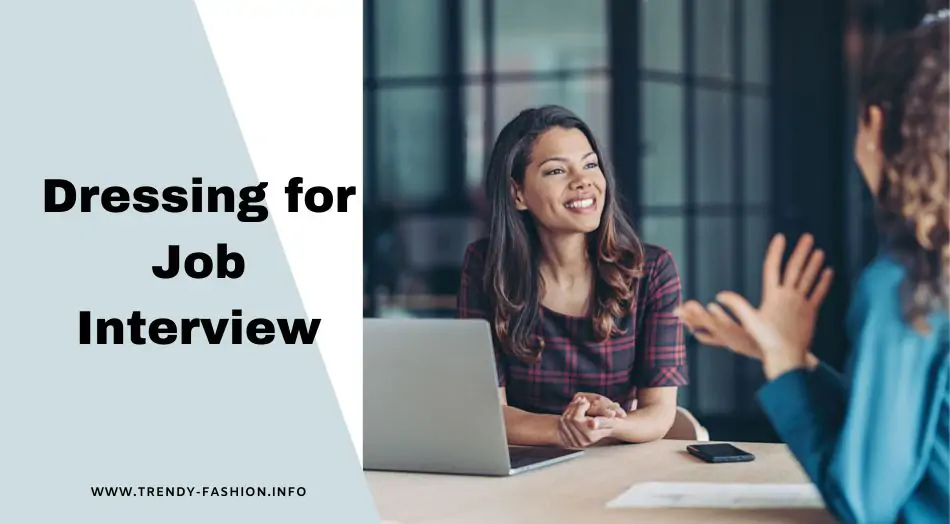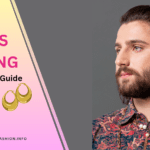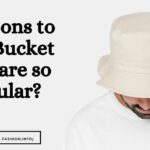Congratulations on securing that job interview! Now, as you stand on the brink of a potentially life-changing opportunity, the first question that arises is, “What should I wear?” Dressing for a job interview can feel like cracking a code, but fret not. In this article, we’ll unravel the do’s and don’ts of job interview attire in simple, everyday language. Our goal is to ensure you leave a lasting impression and, more importantly, walk into that interview room brimming with confidence.

1. Do Your Homework: Know the Company Culture:
Before you decide what to wear for your job interview, it’s essential to do some research on the company you’re applying to. Understanding the company culture is crucial because it helps you align your attire with their expectations.
Start by checking the company’s website, social media profiles, and any available employee photos to get a sense of their dress code. Is the atmosphere formal, with employees often wearing suits and business attire, or is it more casual, with a relaxed dress code? Knowing this information will guide your outfit choice. When in doubt, it’s typically better to err on the side of being slightly overdressed. A good rule of thumb is to dress one step above the company’s usual attire.
2. The Power of the Suit in Job Interview:
A classic suit is a timeless choice for job interviews, especially in more formal settings. It exudes professionalism and demonstrates that you take the interview seriously.
For men, a well-fitted dark suit, like one in navy or charcoal, is an excellent choice. Pair it with a light-colored dress shirt and a conservative tie. Make sure the suit fits you well, as an ill-fitting suit can undermine the overall impression.
Women have the option of wearing a pantsuit or a skirt suit in classic, neutral colors. A suit not only makes you look the part but also gives you a confidence boost. When you look good, you tend to feel more self-assured, which is a significant advantage during the interview.
3. Business Casual:
In some cases, the company’s culture may lean more towards business casual. This dress code allows for more flexibility while still maintaining a professional appearance. For men, business casual can mean wearing slacks with a dress shirt and a blazer.
The tie is optional in these situations. Women can choose a blouse with slacks or a skirt. However, it’s crucial to remember that business casual does not translate to casual everyday wear. You should still appear neat and put-together.
Avoid jeans, t-shirts, and overly casual attire. The key is to strike a balance between professional and relaxed, reflecting the company’s atmosphere while showing respect for the interview process.
4. Dress Smart, Not Loud:
While bright colors and bold patterns are fantastic for social events, they might not be the best choice for a job interview. Stick with neutral, solid colors that convey professionalism and direct attention to you, not your outfit.
5. Pay Attention to Details:
In the world of job interviews, it’s the small details that make a big impact. Ensure your clothes are impeccably clean and well-pressed. Shine your shoes, and make certain your nails are neatly groomed. It’s the often-overlooked details that can send powerful signals.
6. Confidence is Key:
Your outfit sets the stage, but it’s your confidence and demeanor that steal the show.
Confidence is your secret weapon during a job interview. Your outfit is like a suit of armor, but it’s your confidence that helps you wear it well. When you walk into the interview room with your head held high, you’re already making a positive impression. Here’s how to embrace your inner confidence:
- Smile: A genuine smile can work wonders. It instantly makes you more approachable and conveys a positive attitude. So, don’t forget to greet your interviewers with a warm smile.
- Eye Contact: Maintaining eye contact during the interview shows that you’re engaged and attentive. It also demonstrates self-assuredness. Be sure not to stare, but do meet the eyes of your interviewers when speaking and listening.
- Firm Handshake: When you greet your interviewers, offer a firm handshake. A limp handshake can come across as uncertainty, while a bone-crushing grip is a bit too much. Find the middle ground to show you’re self-assured.
- Body Language: Pay attention to your posture and body language. Sit up straight, but not rigid. Avoid fidgeting, as it can indicate nervousness. Instead, use purposeful gestures when speaking to emphasize your points.
Remember, confidence is something you can practice and improve. Before the interview, take a few minutes to stand tall, smile in front of the mirror, and practice your handshake. The more you practice, the more natural confidence will become during the actual interview.
7. Personal Grooming:
Personal grooming is a vital part of the package. Ensure your hair is well-kept, and go easy on the perfume or cologne. Cleanliness is not negotiable.
- Hair: Ensure your hair is clean, well-groomed, and neatly styled. For longer hair, tying it back or using hair products to keep it in place can be a good choice. Avoid experimenting with bold or unconventional hairstyles for the interview.
- Perfume or Cologne: Less is more when it comes to fragrance. Opt for a subtle, fresh scent. Your goal is for the interviewer to notice your professionalism, not your overwhelming perfume.
- Nails: Check your nails. They should be clean and neatly trimmed. Avoid extravagant nail art or extremely long nails that may be distracting.
- Facial Hair: If you have facial hair, ensure it’s neatly trimmed and well-maintained. A clean, professional look is your aim.
- Makeup: For those who wear makeup, keep it subtle and natural. The focus should be on your skills and qualifications, not your makeup choices.
In essence, personal grooming is about ensuring that nothing about your appearance is distracting or unprofessional. It’s the final touch that completes your overall look and leaves a favorable impression.
8. Practice Makes Perfect:
A day or two before the interview, try on your chosen outfit. This serves a dual purpose – it ensures that everything fits well and allows you to get comfortable with your attire. The last thing you want is to discover a wardrobe malfunction minutes before your interview.
9. Pack Smart:
Your choice of accessories can enhance your professional appearance and help you stay organized during the interview. Here’s what to consider:
- Briefcase or Portfolio: A professional-looking briefcase or portfolio is a practical accessory for carrying extra copies of your resume, a notepad, and any documents you might need. It’s both functional and stylish.
- Notebook and Pen: Carry a small notebook and a pen. This demonstrates your readiness to take notes during the interview and shows that you value the information provided.
- Phone: Keep your phone on silent or turned off during the interview. It’s best to minimize distractions. However, having your phone with you can be handy for emergencies or to access any information related to the interview.
- Water Bottle: It’s a good idea to carry a water bottle. Staying hydrated is important, especially if your interview lasts a while. Just remember to take small sips discreetly if needed.
- Umbrella: Depending on the weather and the possibility of rain, having a small, compact umbrella on hand is a practical choice. You don’t want to arrive at your interview drenched.
These items show that you’re prepared and organized, which are qualities that employers appreciate. Your goal is to make a professional and efficient impression, and the right accessories can help you achieve that.
10. When in Doubt, Ask:
If you’re feeling uncertain about what to wear, don’t hesitate to reach out to the person who scheduled the interview. They’ll appreciate your attention to detail and your desire to make a good impression.
Conclusion:
Dressing for a job interview is akin to preparing for a crucial presentation. Your objective is clear: you want to look your best, feel confident, and leave a lasting, positive impression. There’s no one-size-fits-all answer, but the key is to match your outfit to the company culture and the specific position you’re pursuing. So, dive into your closet, consider the company’s environment, and pick the perfect outfit that aligns with your personality and the role you’re aiming for. With the right attire, a dash of confidence, and a sprinkle of preparation, you’re all set to conquer that job interview. Good luck!





